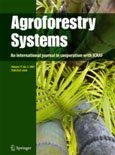Aim: We examined (1) the relationships between aboveground tropical forest C storage, biodiversity and environmental drivers and (2) how these relationships inform theory concerning ecosystem function and biodiversity. Experiments have shown that there is a positive relationship between biodiversity and ecosystem functioning, but intense debate exists on the underlying mechanisms. While some argue that mechanisms such as niche complementarity increase ecosystem function, others argue that these relationships are a selection effect. Location: Eleven tropical forests in the Americas, Africa and Asia. Methods: We analysed the correlates of biodiversity and carbon storage in tropical forests using data from 59 1-ha tree plots from a standardized global tropical forest biodiversity-monitoring network. We examined taxonomic and functional diversity, aboveground C storage and environmental variables in order to determine the relationships between biodiversity and carbon storage in natural (non-plantation) tropical forests. Results: We found that aboveground C storage in tropical forests increased with both taxonomic diversity and functional dominance, specifically the dominance of genera with large maximum diameters, after potential environmental drivers were accounted for (final model R2 = 0.38, P < 0.001). Main conclusions: Our results suggest that niche complementarity and the selection effect are not mutually exclusive: they both play a role in structuring tropical forests. While previous studies have documented relationships between diversity and C storage, these have largely been conducted on small scales in biomes that are relatively species poor compared with tropical forests (e.g. grasslands and temperate or boreal forests). Our results demonstrate that these positive biodiversity-ecosystem functioning relationships are also present in hyperdiverse systems on spatial scales relevant to conservation and management. This insight can be used to inform the conservation and management of tropical forests, which play a critical role in the global carbon cycle and are some of the biologically richest ecosystems on the planet.
DOI:
https://doi.org/10.1111/geb.12143
Altmetric score:
Dimensions Citation Count:

Publication year
2014
Authors
Cavanaugh, K.C.; Gosnell, J.S.; Davis, S.L.; Ahumada, J.; Boundja, P.; Clark, D.B.; Mugerwa, B.; Jansen, P.A.; O'Brien, T.G.; Rovero, F.; Sheil, D.; Vasquez, R.; Andelman, S.J.
Language
English
Keywords
carbon, carbon sequestration, biodiversity, taxonomy, diversity, tropical forests, biomass production, ecosystem management























